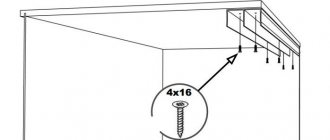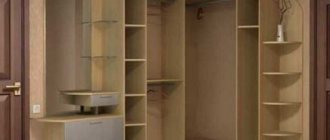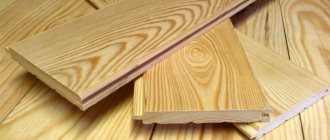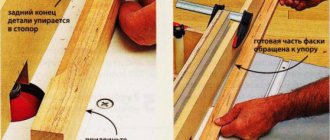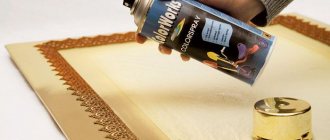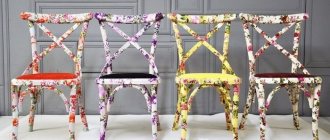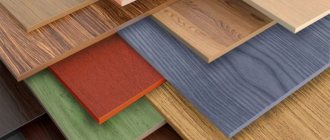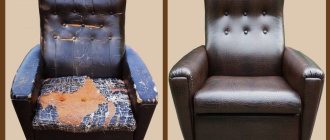Carpentry and joinery work cannot be done without the use of fasteners. They differ in types, accessories, type of fastening and area of use. Types of fasteners:
- bracket;
- dowel;
- capercaillie;
- nog;
- wooden chopstick;
- dowel and other products.
The use of these parts is not as common as the use of nails and self-tapping screws, but when faced with such forms of fasteners, the master must understand how to work with them.
Shape Features
For connections, two types of wooden choppers are most often used:
- Round - widespread, but high in cost compared to other parts.
- Square - although the manufacturing process is simple, they are rarely used. To use this type of fastener, you need to cut out installation holes that match the shape of the dowel. The process is complex and time-consuming, while nests for round wooden choppers are made as easy as shelling pears.
Common mistakes
Errors when using dowels in assembling furniture occur mainly among beginners. They can be avoided by considering the main difficulties:
- The planes of the structural elements do not coincide, while the edges of the connections themselves are located at the same level. To correct this, you should align the drill along the base planes of the two blades being joined, focusing on the central part of the edges.
- The holes in different elements do not match. This may make it difficult to secure the dowels properly. To ensure that all the holes are made exactly opposite each other, special markers are used. First, holes are drilled in one sheet and markers are inserted into them. After this, the two elements are pressed tightly against each other the way they should be assembled. On the second part, the markers will leave marks at the points where you need to drill holes so that the blades fit together as much as possible.
- Furniture dowels do not fit into the holes. It also happens that they simply fall into them. The correct fastener should fit tightly into the intended hole, so you should check that the diameter of the dowels matches the size of the holes. Factory-produced parts may not match the parameters of the technical documentation, both due to mass production and due to high or low humidity (products may swell or lose volume).
If the diameter of the dowels corresponds to the declared one, the problem is in the drill, namely in the drilling jig, due to wear of which the drill deviates. You should change the bushings or purchase a new tool.
These are the main problems that can arise with the installation of furniture on dowels. In order for the assembly to be successful, you also need to take into account a number of rules:
- It is better to mark with a sharpened pencil (an unsharpened one will not give accuracy) or a knife.
- Use straight drills with the point pointing down. If the sharpening is spiral, then strong versatile deviations are possible, and the direction of the hole made will be incorrect.
- A retaining ring is used to create a hole with the same depth. It is fixed on the drill and does not allow you to drill more than necessary. The optimal depth in this case should be 2–3 mm greater than the length of the rod itself.
Tips for repairing furniture depending on the type of damage
For high-quality assembly of cabinets, sofas and other structures, you can use special fasteners - furniture dowels of various sizes and configurations. It is best to give preference to wooden elements, for which holes are created in the canvases, and the rods themselves are attached with wood glue. You should first measure all furniture elements and parts, check the equipment and apply approximate markings. This will allow you to use fasteners as accurately as possible with the smallest error.
How to make a wooden dowel with your own hands
If necessary, dowels and dowels can be made at home, but production will require a lathe. The process of making wooden fasteners is as follows:
- For work, take a harvest of wood of the selected species. The block must be of high quality, without cracks, wormholes, knots, or irregularities. Use quality seasoned wood. When drying, the parts can become deformed and crack, as a result of which the cross-section of the wooden furniture chopper changes.
- Place the workpiece on the lathe and begin removing chips, gradually reducing the diameter.
- Having reached the required section, remove the chamfers and cut the workpiece.
Note! In factory conditions, the length of the dowels is up to 200 centimeters. After processing, the workpiece is removed and cut into fasteners of the required length.
Elements for timber - features of use
When building a wooden house from timber, dowels for the log house are used to secure the logs, and sometimes the only one. They are significantly larger in size than furniture ones; you need to order them or make them yourself, and you often need to make holes for them yourself. If some other fastening is planned, and this method is only a way of orientation and insurance against mobility in a plane perpendicular to the axis of the dowel, then you can do everything yourself.
For a log with a diameter of 18 cm, the holes and the diameter of the fasteners should be about 2.5 cm, so you should take a drill. If you don’t want to grind for a long time to a cylindrical shape, you can make dowels for timber with a square cross-section of 2.4 cm. At least 3 holes should be made in one log (two at the edges and one in the middle), if it is very short, then two will be enough . It is advisable to maintain the same depth, so make a mark on the drill so as not to drive it too deep. It is advisable to make do with a depth of 4 cm.
The disadvantage of square dowels is that shrinkage of the house is inevitable, and if it does not occur in proportion, the logs will begin to move freely. In the case of round products, this probability is much less. Especially if you have the same type of wood, but this is not a guarantee, because they may be of different ages. Sometimes, to minimize this effect, glue is dripped into the holes or the surface of the dowel is coated.
There is another fastening option for the construction of houses made of timber. At first glance, a metal dowel seems more reliable: it does not shrink, it has quite definite dimensions both at the beginning of construction and after many years, it is very strong, and will not crack due to any uneven changes in the geometry of the building. But this product is significantly more expensive in cost, and also will not help with shrinkage of the material of the house itself. Still, they are abandoning it in favor of natural wooden fasteners.
How to arrange a connection between furniture parts
The procedure for attaching parts to a wooden nail is not complicated. By following the instructions below, you can connect the parts and assemble the furniture without much effort. The assembly diagram looks like this:
- Holes are drilled in the parts to be joined if they were not made at the factory. The diameter of the recesses should be slightly larger than the diameter of the chopper, and the length should be 1-2 mm longer than the dowel. The presence of gaps in this case is by no means a disadvantage. They prevent fasteners from jamming and help compensate for temperature and humidity deformation.
- The protruding part is filed down if necessary.
- Using a mallet, hammer a dowel into the hole so that its surface is slightly below the plane of the part. If you need to connect the furniture frame, then the dowel is driven in half. The protruding part of the wooden furniture chopper is smeared with glue and, having laid the end part of the furniture or facade on top, it is seated on the mount.
At first glance, it seems that this technique does not provide reliable fixation of the structure, but in practice it turns out that when using high-quality, well-dried dowels, furniture, log houses and timber are durable and stable.
Dowels, dowels, choppers, metal fasteners are types of fastening elements used for reliable connections. Without their use it is impossible to imagine the house-building industry and the furniture industry.
Varieties and sizes
Such fastening is in demand in the furniture industry due to a number of advantages:
- corrugated surface - notches on the parts allow you to fix the elements well, increasing the adhesion area;
- presentability - when assembling furniture, fasteners are immersed in the base material, so they are not visible (unlike screws, bolts and other screwed-in parts);
- wide range - the consumer can choose the required length and diameter of the element depending on the design of the furniture.
There are also disadvantages, for example, such rods cannot be used if it is necessary to fasten vertical planes. For this purpose, it is better to use screws, nails and other fasteners that ensure reliable alignment. Furniture dowels can be wooden (they are more popular), as well as plastic, which are used in rare cases.
Ideas for remaking furniture with your own hands, necessary tools
Wood
Most often, furniture is made from solid wood, MDF, plywood, chipboard. Products made from hardwood are used for its assembly. Notch options may be different:
- Straight vertical is the universal and most common type.
- Helical - located at an angle from the vertical axis, making it difficult to loosen.
- Complex - has both transverse and longitudinal cuts. Designed for structures subject to high loads that require strong connections.
- Horizontal - secures different parts as much as possible; it is not recommended for use in cases where disassembling furniture may be required.
- Smooth - made completely without corrugation, it allows you to resist the shift of structural elements due to exposure to moisture and temperature. When deformed, such a rod, also called a dowel, bends and subsequently provides high resistance to loads.
Notches on furniture dowels allow air to pass through during installation. Since wooden elements are most often placed on glue, this improves adhesion and speeds up hardening.
The assortment includes rods with a circumference from 4 to 30 mm, length sizes vary from 15 to 200 mm. They are often made to order when assembling designer items, since not every element will fit unique items. Wooden dowels are resistant to temperature changes and reliable. They have no shortcomings as such.
Plastic
The plastic version is used for connecting parts of prefabricated cabinet panel furniture, as well as for transforming products. It is produced by casting, the material used is impact-resistant plastic that does not collapse under physical impact. The options for notches on plastic dowels are the same as in the case of wooden ones. They have similar sizes. The disadvantage of this type of fastener is that it is not as common as wooden ones; it cannot be found in any department with furniture fittings.
Some plastic parts have “notch” on the sides, that is, they are equipped with protrusions. This surface prevents the dowel from falling out when disassembling furniture, securely fixing it in the main fabric.
In addition to plastic ones, there are metal dowels, which are considered stronger and last much longer. They are indispensable when assembling tables, as they provide maximum structural stability. However, such products do not prevent material shrinkage, and their cost is much higher than that of any other fastener.
Types of furniture cleaning, rules and nuances of using each of them
What are wooden dowels?
First, it’s worth understanding what the dowel itself is. The part is a miniature fragment made to strengthen the walls of a log house made of timber. In this case, it is the diameter of the dowels for the timber that acts as one of the most key characteristics.
Dowel for stairs
The purpose of the dowels may be different. For example, wooden dowels are aimed at fixing log structures. The detail allows you to slow down a variety of negative consequences that invariably accompany the functioning of wooden structures. It could be:
- drying out;
- deformation;
- loosening;
- bias.
Such peculiar pins, installed correctly and correctly, will make the building stable. The beams of the structure will be placed in such a way that they will remain unchanged after a couple of months and after several decades.
Difference between wood and metal nails
The question is often asked on various construction forums: can a wooden dowel for timber be replaced with metal nails or rods. Despite the fact that it is easier to work with metal nails, such a replacement is unacceptable for the following reasons:
- The main purpose of dowel connections is to resist shear forces due to elasticity; mass-produced metal nails do not have such properties;
- Metal fasteners form a rigid coupling of wooden parts; such fastening prevents shrinkage processes and can lead to distortion of the walls, contributes to the formation of cracks and cracks;
- When driven, nails tear wood fibers, deep internal cracks form, and together with the metal, this contributes to the formation of cold bridges.
Spikes for fixing timber: which ones to choose and why?
The most popular are dowels made from hard wood. The most durable options are spikes made of oak or birch. It is not possible to deform, bend, or break them. However, there is one condition. They must be properly secured. What are their shape and sizes? The optimal solution is details with rounded contours. Their length should not exceed 25 mm. Wooden dowels must be smooth and even not only at the point of installation, but over the entire surface. It is these nails that guarantee the longest possible service life.
Installing dowels in timber is a mandatory rule for timber and log structures. Birch thorns are the most common option. Such dowels cannot become an analogue of self-tapping screws or primitive nails. If they are used, it is impossible to guarantee the stability and reliability of the structure. It is also worth abandoning the use of reinforcement. Metal versions can lead to a number of negative consequences, which is explained by the direct interaction of materials with different thermal conductivity parameters. What can the use of metal dowels lead to? It could be:
- condensation formation;
- coating the surface of the spikes with rust;
- rotting of the entire layer of wood.
Metal fasteners
In addition to dowels and dowels, staples, dowels and wood grouse are also used in construction.
We present their technological characteristics below:
- Wood staples are a fairly simple type of fastener. They are metal rods bent in the shape of the letter “P”. During installation, the ends of the staples are driven into adjacent parts or pass through thin wood and bent from the inside.
Photos of construction staples
Note! If previously only large-sized construction staples were used, then with the spread of furniture staplers, small fasteners made of galvanized steel began to be used for fastening thin plywood or fiberboard/chipboard.
- A wood dowel is a multi-component structure that consists of a wooden cylinder, a plastic or metal sleeve (sometimes this sleeve is called a dowel), and a locking screw or self-tapping screw. The cylinder or sleeve is inserted into a pre-drilled hole, and then, expanding after the screw is screwed in, it is wedged out, providing a reliable fixation.
- A wood grouse bolt is a self-tapping screw with a hex head, the upper part of which is devoid of threads. When installed correctly, the fasteners provide a very secure hold (hence the name).
Hex cap screw
- The question of how to properly screw a capercaillie into a tree is by no means an idle one. Since this product is tightened with a wrench, it is very easy for it to “rip off” the head with excessive force. So experts recommend drilling a starting hole with a diameter equal to the internal diameter of the thread for installing fasteners, and only then tighten the bolt smoothly.
Advice! When working with hardwood, it is recommended to add a small amount of lubricant to the threads.
The nuances of creating dowels
How to make dowels for timber? It's actually a simple procedure. It's easy to do it yourself. To do this, you will need to use logs of a certain length. The blanks (ideally made from birch) must be split into many small fragments. It is advisable to make them in the form of squares. Then you will need to trim them. This is done manually. It is recommended to give the workpieces a round shape of the desired diameter.
It is very easy for lathe owners to make dowels. Using it, elements are created quickly and accurately. If there are no wooden logs, you can always use cuttings from shovels that have already gone out of use. To give them the required size and shape, you just need to cut them. Round parts can also be easily created using a circular saw.
What is a lamella?
There is another interesting option for such fasteners in construction - a flat dowel. In wide circles it is more often called lamella, which is how it can be found in stores. Its essence is that it is not cylindrical, but really flat, it is also attached using specially made grooves, and often sits on glue. The holes are made, of course, not with a drill, but with a special router. It is used in cases where the possibility of twisting of parts relative to the axis of the dowel cannot be allowed.
In general, this connection will be the same as in the case of a round fastener, quite reliable, resistant to cutting, and, moreover, allows the installation of very thin parts. True, you need to be more careful when assembling. Since it is best to glue with water-based glue, and due to the thinness of the fastener, its deformation will be significant, you should not hesitate, it is important to quickly place the lamella in the hole. You can, of course, use synthetic adhesives, but very few assemblers choose this option.
Advantages and disadvantages of dowel joints
The advantages of using wooden dowel connections have been tested for centuries, these include:
- Dowels for timber are resistant to deformation, retain elasticity for a long time, and withstand significant bending loads;
- Fastenings counteract the negative consequences of shrinkage, eliminate the causes of the formation of cracks, crevices and gaps between the crowns;
- The timber and dowels react equally to ambient humidity and climate changes, which avoids wall deformation;
- The use of wooden fasteners allows you to build a house without the use of construction equipment and special tools.
The disadvantages include: additional labor costs due to the need to drill installation holes; when selecting materials and carrying out work, certain rules must be followed.

